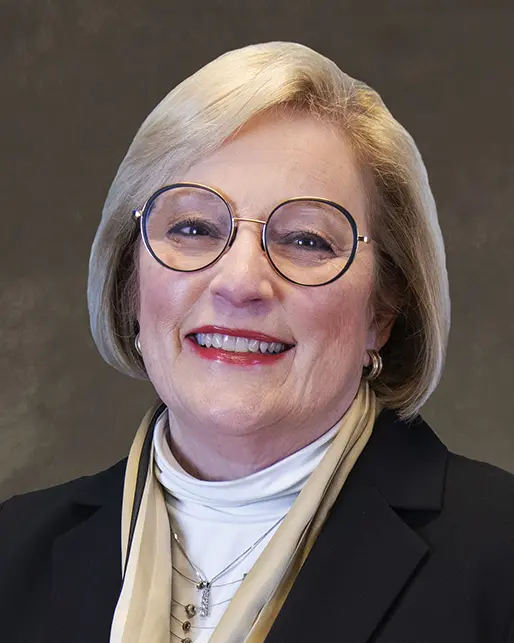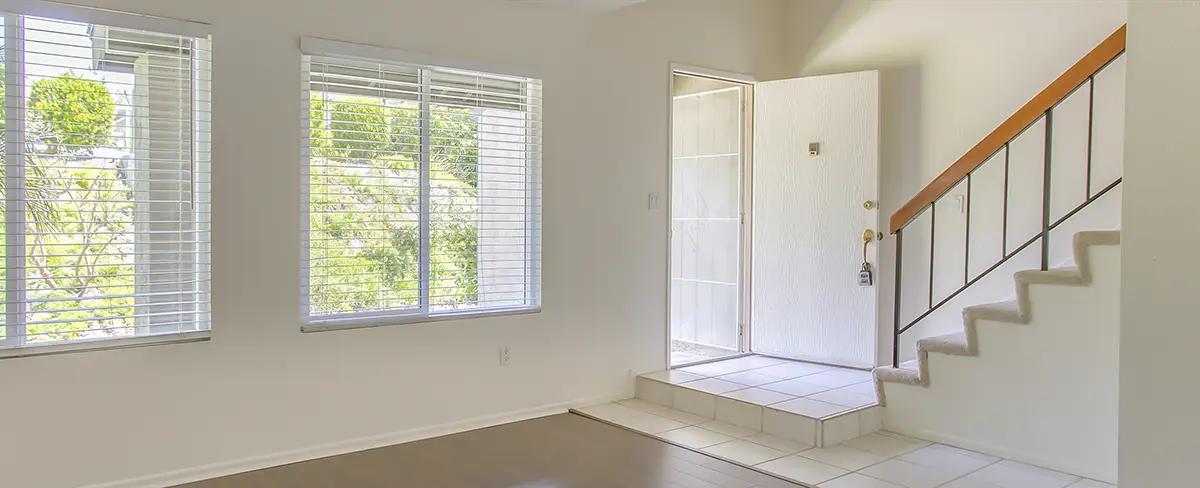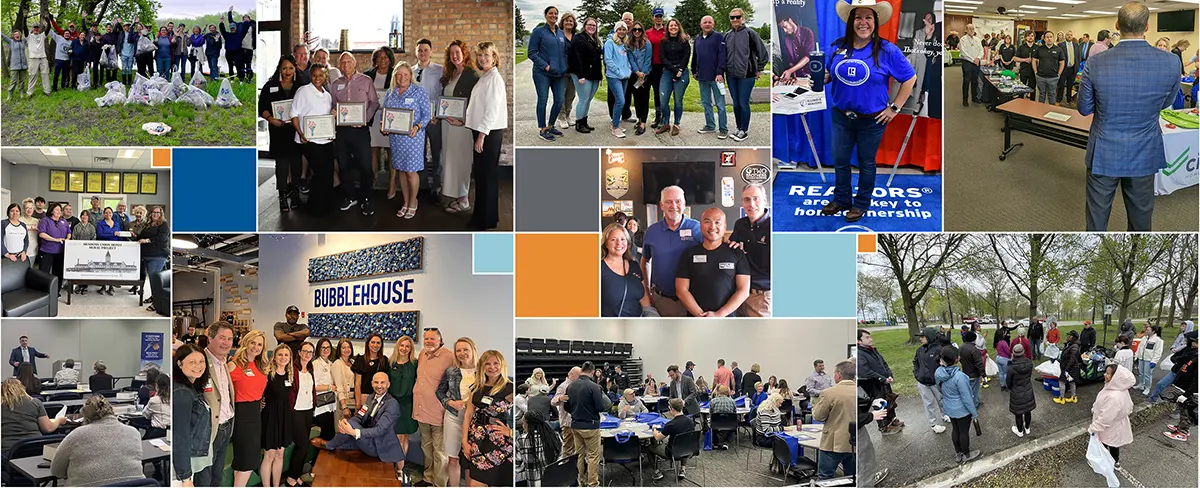Written by Lee Nelson
Reading Time: 8 min
People can still realize the American dream of buying a home despite historically low inventory, high interest rates and higher home prices. Despite the roadblocks, REALTORS® can help consumers find opportunities including some alternative housing possibilities.
“It just takes creativity to help your clients,” says Amy Wu, a REALTOR® with Keller Williams Success Realty, Barrington.
Here are some of the alternative choices available to explore:
“It just takes creativity to help your clients.”
Amy Wu
Multigenerational
Amy Wu became a REALTOR® a few years ago, and now has become a multigenerational home buying expert. Multiple generations living under one roof is a trend that is growing in popularity. The 2022 National Association of REALTORS® Profile of Home Buyers and Sellers shows that multigenerational buying is back near an all-time high at 14 percent.
But there are many other options for homebuyers that REALTORS® can help them pursue if the traditional housing world isn’t what they need, want or can accomplish for a variety of reasons.
Amy Wu works with a diverse clientele all over the Chicago area, and many are living with several generations under one roof. For some it is a cultural preference, some do it so their parents or grandparents don’t have to go to a nursing home, and others do it for financial or convenience reasons – such as the grandparents can take care of the grandchildren while the parents are at work.
“They come from all walks of life and cultures. In some cultures, it’s very common for multigenerational living. The family unit is seen as a very strong value,” adds Amy Wu, who is Chinese.
In fact, she lives with her two parents and a younger sister.
“My younger sister has Down syndrome. I will always live with her. It just works,” she states. “Even if I get married or have children, I still feel my parents will be close like in a coach house. My parents aren’t fluent in English.”
Many of her clients discover that living with two or three generations in the home can be beneficial for everyone. She feels the concept will grow because people are living longer, and more people will need homes.
Many families feel the passion to take care of the elderly population. She also added that Asian American and Pacific Islanders (AAPI) are the fastest growing minority population in the United States.
“They value family ties, as do other cultures. So, builders are now building more main level bedrooms for those who are aging,” she adds.
Amy Wu works with all of her clients by helping them understand different options in finding a home to make multigenerational living work.
“You have to envision how to change things such as maybe remodeling an office space or living room on the lower level into a bedroom for grandma,” she adds.
They might be able to convert a half bath into a full bath on the first floor. She’s even helped clients find ways to install elevators in homes.
“You just have to be creative to make things accessible,” she says.

Amy Wu
Keller Williams Success Realty
Barrington
Rent-to-own

Chay Spaniol
Chayanta Spaniol
Lisle
Chay Spaniol bought her first house at age 21, her second at 23 and hasn’t stopped since. She became a REALTOR® in 2014 to help herself and others buy their homes, and she is licensed in Illinois, Indiana, Florida and Tennessee.
During her first year in real estate, she got married and had a baby but was having a hard time getting a loan since she was self-employed.
“I began asking people at Century 21, where I worked then, about the rent-to-own concept and began educating myself,” says Spaniol, who is now the owner and principal managing broker at Chayanta Spaniol brokerage in Lisle.
She never bought her own house using this process, but helped many others, including those who have gone through bankruptcy. She admits that it was much easier a few years back to find sellers willing to offer this option, but it’s still not impossible.
As a REALTOR®, the advantage is that you build a rapport with a client and the people who are renting the home. She’s also able to help people who own their own businesses but may not have the right income on their tax returns because of write-offs for business expenses. Plus, some people don’t want to sell their home right away, so they rent it with the possibility of selling it to that person. The contracts she works with are often in one-year increments, renewable for up to five years.
“It can be a win-win for everyone involved,” Spaniol adds.
NOTE: There can be regulations on some of these types of transactions for sellers who offer “seller financing” (like a limited number of transactions if they are considered seller financed) and for buyers using this method, so both parties should seek legal advice.
Co-living
Can you imagine renting an affordable apartment in Chicago with brand new furnishings including your plates and silverware, weekly cleanings and fun community events? It’s called co-living, and Tripalink just debuted its newest creation—Post Chicago. The 431-bed housing solution helps those who need temporary housing such as a travel nurse (a minimum of a three-month lease is available) to college students, interns, retirees and others wanting to start new chapters in their lives.
This type of alternative housing offers residents different amenities including a rooftop deck, barbecues, fitness center, lounge for working and socializing, screening room, package room, and events. This kind of co-living alternative offers fully furnished and conventional unfurnished units.
“It definitely is an exciting concept, and a very unique concept that provides flexibility from the traditional rental apartment,” says Bonnie Wu, property manager at Post Chicago. “If someone is new to the area, especially with those with no family nearby, it is a great way to meet new people and to understand the neighborhood and what it offers.”
“When costs are rising with inflation, the co-living concept benefits people,” says Tony Gallo, vice president of operations at Tripalink, based in Los Angeles. “It’s still a niche market.”
Since recently opening, the Chicago project is quickly finding interest from people from all walks of life and ages.
“We are seeing people who are buying a home and need temporary housing. We are seeing it appeal to anyone who wants flexible lease terms such as someone in school or a travel nurse,” he adds.
Bonnie Wu believes that co-living spaces will help those who want to eventually own a home or condo save money and build up their credit score.
“The flexibility we provide can also give the future homeowner some time to search the neighborhood they want to buy in,” she adds.

Bonnie Wu
Post Chicago
Chicago
Accessory Dwelling Units (ADUs)
If a homeowner you are working with needs that extra mother-in-law suite or wants to make extra rental income to pay for the mortgage, you might suggest an Accessory Dwelling Unit (ADU) or coach house. ADUs can be detached or attached to someone’s primary residence. They need to include a kitchen, bathroom, and places to sleep and live. Your client could transform a garage, an attic, or a basement into one of these housing units or build a new one in the backyard.

Betsy Mitchell
Illinois REALTORS® Senior Advisor of Governmental Affairs
It is important to be mindful of any zoning restrictions. However, because of the lack of available housing, some municipalities have made regulations more flexible and conducive to homeowners who want to create these units. Illinois REALTORS® has been advocating for this for years.
“We have an opportunity to testify at hearings on this subject. This is an easy thing to do to help the shortage of housing supplies at every level,” says Betsy Mitchell, Senior Advisor of Governmental Affairs for Illinois REALTORS®. “It has gained traction in some communities.”
In fact, ADUs are part of the The Chicago Metropolitan Agency for Planning’s comprehensive plan to generate more housing options for northeast Illinois. About a dozen communities in northern Illinois permit ADUs through their zoning ordinances or are working on approving ADUs. The communities involved in this movement include: Antioch, Bull Valley, Chicago, Evanston, Homewood, Lake Bluff, Northbrook, Oak Park, Park Forest, South Elgin, Wilmette and Woodstock.
“In summary, clearly there are many factors involved for homeowners to consider before finalizing their decision regarding ADUs,” Mitchell says.
About the writer: Lee Nelson is an Illinois-based writer whose work regularly appears in REALTOR® Magazine and other industry publications.






